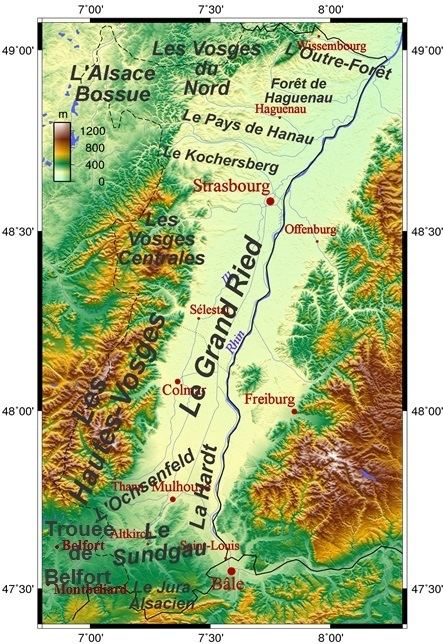 | ||
This is a list of World War 1 Memorials and Cemeteries in Alsace.
Contents
- Background
- The course of the front line
- The area around Munster
- Route des Crtes Col du Bonhomme to the Hartmannswillerkopf
- The route itself
- References
The Western Front ran across the Haute Alsace, across Le Bonhomme, passing Le Ligne, on near Munster, Reichackerkopf and Sondernach. It passed through the Petit Ballon and Grand Ballon before reaching Le Vieil Armand (Hartmannswillerkopf) and passing a line through Thann and Cernay. It then ran its course to Altkirch and the Sundgau and the Swiss border.
Background
While Alsace comprises the "départements" of Bas-Rhin and Haut-Rhin the front line just ran through the Haut-Rhin.
The fighting in this area in the 1914-1918 war can be divided into
The course of the front line
We are dealing with a front line that starts to the south of St Die des Vosges and runs right down to the Swiss border. We shall cover the German cemetery south of Saulcy-sur-Meurthe, La Croix aux Mines, the Col du Bonhomme and the town of La Bonhomme as well as the French National cemetery at Duchesne. Next we will identify memorials and cemeteries in the area to the north and south of Orbey and the valley of Orbey. This will cover the Linge area, the memorial of Linge and the battle fought there, as well as covering memorials or cemeteries at Lapoutrie, Labaroche and Hohrod. We shall then deal with Munster and the area south of Munster and then the Hohneck peak and the Petit Hohneck. . We shall then look at the Grand Ballon and the Petit Ballon before proceeding to Guebwiller, Soultz, Moosch and Hartmannswiller finally dealing with Cernay, Thann, Altkirch and the Swiss border town of Pfetterhouse.
The area around Munster
Munster itself and all the villages in the Munster valley were subjected to artillery bombardments. One such was Metzeral and here in 1915 there was some fierce fighting in June 1915. General Pouydraguin of the 47th French Infantry joined with General Serret and his 66th French Infantry in an offensive. On 9 June the population of Metzeral and Sondernach were evacuated and the French attack started on 15 June and on the 20th and 21st Metzeral was attacked with the fighting taking place in the village itself. Metzeral and the Fecht valley were now in ruins but the French offensive had failed. One month later the fighting would start at Linge.
After the end of 1915 fighting in the Vosges was less intense but the various cemeteries scattered around the area bear witness to the great loss of life. One such cemetery is known as the "Chêne Millet" and holds the remains of 2,632 Frenchmen. It is located between Metzeral and Mittach..
Route des Crêtes. Col du Bonhomme to the Hartmannswillerkopf
The Route des Crêtes or "Road of the Ridges" was a major construction in the region ordered by Joffre and finished in the summer of 1915. It ran from the Col du Bonhomme in the north to the Hartmannswillerkopf in the south and was built to facilitate the delivery of supplies to the French troops on the passes and mountains they held, as well, of course, as moving the soldiers themselves when it was necessary to bolster forces in any given area.
The route itself
From Sainte-Marie-aux-Mines the Route des Crêtes runs down to the Col du Bonhomme on the route connecting Saint-Dié-des-Vosges and Colmar. The route continues south via the Col de Louchbach to the Col de Calvaire where it enters the department of Vosges. The route then passes the Gazon du Faing from where there is a panoramic view stretching to the Black Forest across the Rhine valley in Germany and the Hohneck, Petit Ballon and Grand Ballon summits in the Vosges mountains. From here the road then crosses the Col de la Schlucht a pass which connects Gérardmer with Colmar. The road then passes the Hohneck mountain. After passing the Kastelberg, Rainkopf and Rotherbachkopf peaks the road returns to the Haut-Rhin department before it crosses the Cols du Herrenberg and Hahnenbrunnen then reaching Le Markstein. The road now reaches its highest point at the Col du Grand Ballon before passing the Col Amic on the descent to Cernay and passing Hartmannswillerkopf.
